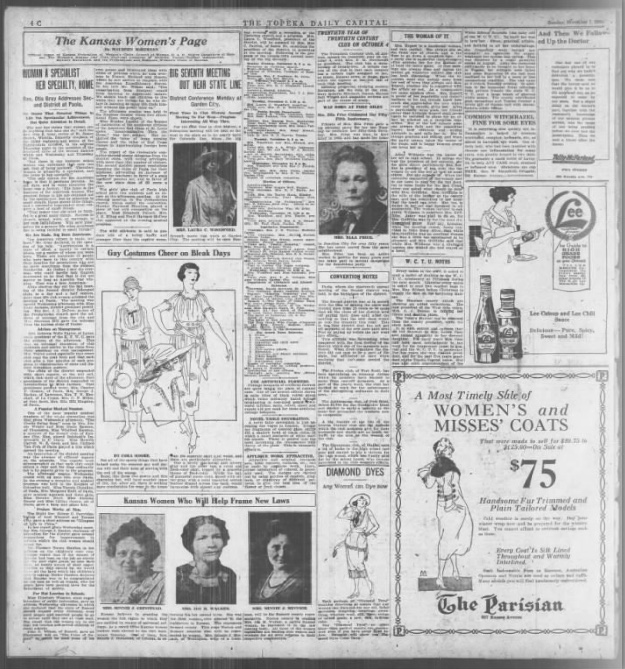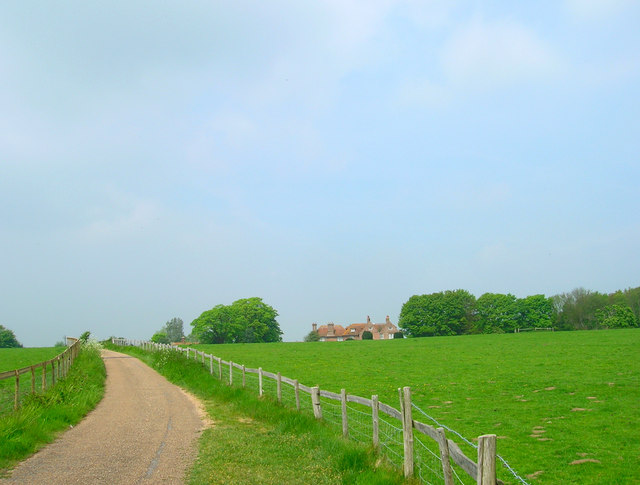|
Patience Gray
Patience Jean Gray (31 October 1917 – 10 March 2005) was an English cookery and travel writer of the mid-20th century. Her two most popular books were ''Plats Du Jour'' (1957) – written with Primrose Boyd, about French cooking – and ''Honey From A Weed'' (1986), an account of the Mediterranean way of life. Upbringing Born Patience Jean Stanham at Shackleford, near Godalming, Surrey, she was the second of three daughters of Hermann Stanham, a major in the Royal Field Artillery and his wife Olive Florence, ''née'' Colgate, daughter of a Lincolnshire farmer. Patience discovered late in life that her father, at various times a surgeon, a pig farmer, and finally a photographer, was the son of a Polish rabbi called Warschavski, who had arrived in England in 1861 and become a Unitarian minister. During her childhood at Mitchen Hall, "a grand but rather isolated house of peach-coloured brick", her father's moods dominated family life: "I have listened to other people's accounts of ... [...More Info...] [...Related Items...] OR: [Wikipedia] [Google] [Baidu] |
Shackleford
Shackleford is a village and civil parish in the Borough of Guildford, Surrey, England centred to the west of the A3 between Guildford and Petersfield southwest of London and southwest of Guildford. Shackleford includes the localities of Eashing, Hurtmore, Norney and Gatwick. History The village does not appear in the Domesday Book of 1086; however, Hurtmore manor in the east of the parish and Rodsall manor, just to the west of the parish, a far-south part of Puttenham, do appear. The name first appears in 1220, as ''Sakelesford'', and appears in a variety of mostly quite minor variants thereafter. The second element, ''-ford'', is self-explanatory, but the etymology of the "Shackle-" element is uncertain. One possibility is that it is from Old English ''sceacol'' 'a shackle', perhaps with reference to a chain used to aid in crossing the river. Alternatively, there may have been an unattested Old English adjective ''*sceacol'' 'shaky, loose' from the stem of the Old Engl ... [...More Info...] [...Related Items...] OR: [Wikipedia] [Google] [Baidu] |
Milner Gray (designer)
Milner Connorton Gray CBE (1899–1997) was one of the key figures of British industrial design in the 20th century, having played an important role in establishing design as a recognized profession, the emergence of British design consultancies, and the development of Design Management. Background Gray studied painting and design at Goldsmiths College School of Art, London University, where he was a fellow student and friend of the artist-designer Graham Sutherland. During the First World War he served in the Royal Engineers where, like other celebrated artists and designers in both World Wars, he was involved in camouflage work. In 1930 he became a founder member of the Society of Industrial Artists (SIA, see Chartered Society of Designers), which sought to gain professional recognition for the designer in industry. By this time multidisciplinary design consultancies had begun to emerge in the United States. Almost by way of response Gray established the Bassett-Gray Group of Arti ... [...More Info...] [...Related Items...] OR: [Wikipedia] [Google] [Baidu] |
Provence
Provence (, , , , ; oc, Provença or ''Prouvènço'' , ) is a geographical region and historical province of southeastern France, which extends from the left bank of the lower Rhône to the west to the Italian border to the east; it is bordered by the Mediterranean Sea to the south. It largely corresponds with the modern administrative region of Provence-Alpes-Côte d'Azur and includes the departments of Var, Bouches-du-Rhône, Alpes-de-Haute-Provence, as well as parts of Alpes-Maritimes and Vaucluse.''Le Petit Robert, Dictionnaire Universel des Noms Propres'' (1988). The largest city of the region and its modern-day capital is Marseille. The Romans made the region the first Roman province beyond the Alps and called it ''Provincia Romana'', which evolved into the present name. Until 1481 it was ruled by the Counts of Provence from their capital in Aix-en-Provence, then became a province of the Kings of France. While it has been part of France for more than 500 years, it ... [...More Info...] [...Related Items...] OR: [Wikipedia] [Google] [Baidu] |
Ursula Mommens
Ursula Frances Elinor Mommens (née Darwin, formerly Trevelyan; 20 August 1908 – 30 January 2010) was an English potter. Mommens studied at the Royal College of Art, under William Staite Murray, and later worked with Michael Cardew at Winchcombe Pottery and Wenford Bridge Pottery. She was the daughter of Bernard Darwin and his wife the engraver Elinor Monsell. Her brother was Sir Robert Vere Darwin. She was the great-granddaughter of Charles Darwin and the great-great-granddaughter of the potter Josiah Wedgwood. She married first Julian Trevelyan; their son is the film-maker Philip Trevelyan. Her second husband was Norman Mommens. Mommens lived and worked in South Heighton, East Sussex, making both wood and gas-fired functional stoneware Stoneware is a rather broad term for pottery or other ceramics fired at a relatively high temperature. A modern technical definition is a vitreous or semi-vitreous ceramic made primarily from stoneware clay or non-refractory fire ... [...More Info...] [...Related Items...] OR: [Wikipedia] [Google] [Baidu] |
Norman Mommens
Norman Mommens (31 May 1922 – 8 February 2000) was a Belgian sculptor. Born in Antwerp, his father was Flemish and his mother was English. He studied mural painting at Elkerlyc, the High School for Architecture and the Visual Arts, in Amsterdam. World War II and two years of forced labor during the German occupation of Belgium prevented him from continuing his studies. In 1948, he left Belgium for England. theitaliantranslator.wordpress.com. 8 April 2017. Accessed 17 January 2023. Mommens was married to the English potter Ursula Trevelyan (née Darwin), but divorced her. In 19 ... [...More Info...] [...Related Items...] OR: [Wikipedia] [Google] [Baidu] |
Women's Page
The women's page (sometimes called home page or women's section) of a newspaper was a section devoted to covering news assumed to be of interest to women. Women's pages started out in the 19th century as society pages and eventually morphed into features sections in the 1970s. Although denigrated during much of that period, they had a significant impact on journalism and in their communities. History Early women's pages In 1835 ''New York Herald'' publisher James Gordon Bennett Jr., created the first newspaper society page. In the century's final two decades, a "motley assemblage" of stories presumed to be of interest to women began to be gathered together into a single section of newspapers in Britain, Canada, and the US. In the 1880s and 1890s, newspaper publishers such as Joseph Pulitzer started developing sections of their papers to attract women readers, who were of interest to advertisers. Industrialization had profoundly increased the number of branded consumer products ... [...More Info...] [...Related Items...] OR: [Wikipedia] [Google] [Baidu] |
The Observer
''The Observer'' is a British newspaper published on Sundays. It is a sister paper to ''The Guardian'' and ''The Guardian Weekly'', whose parent company Guardian Media Group Limited acquired it in 1993. First published in 1791, it is the world's oldest Sunday newspaper. History Origins The first issue, published on 4 December 1791 by W.S. Bourne, was the world's first Sunday newspaper. Believing that the paper would be a means of wealth, Bourne instead soon found himself facing debts of nearly £1,600. Though early editions purported editorial independence, Bourne attempted to cut his losses and sell the title to the government. When this failed, Bourne's brother (a wealthy businessman) made an offer to the government, which also refused to buy the paper but agreed to subsidise it in return for influence over its editorial content. As a result, the paper soon took a strong line against radicals such as Thomas Paine, Francis Burdett and Joseph Priestley. 19th century In 180 ... [...More Info...] [...Related Items...] OR: [Wikipedia] [Google] [Baidu] |
Persephone Books
''Persephone Books'' is an independent publisher based in Bath, England. Founded in 1999 by Nicola Beauman, Persephone Books reprints works largely by women writers of the late 19th and 20th century, though a few books by men are included. The catalogue includes fiction (novels and short stories) and non-fiction (diaries, memoirs and cookery books). Most books have a grey dustjacket and endpaper using a contemporaneous design, with a matching bookmark. The company sells books mostly through its website, but also maintains a shop in Bath. History Persephone Books was founded as a mail-order publisher in the spring of 1999 by writer Nicola Beauman, after she received a small inheritance from her father. Beauman named the company Persephone after the Greek goddess connected with spring who is "both 'victim and mistress'". Beauman wanted to upend the devaluing of women writers in literary culture and to restore previously lost works to the canon. She was inspired by Virago Press ... [...More Info...] [...Related Items...] OR: [Wikipedia] [Google] [Baidu] |
Elizabeth David
Elizabeth David CBE (born Elizabeth Gwynne, 26 December 1913 – 22 May 1992) was a British cookery writer. In the mid-20th century she strongly influenced the revitalisation of home cookery in her native country and beyond with articles and books about European cuisines and traditional British dishes. Born to an upper-class family, David rebelled against social norms of the day. In the 1930s she studied art in Paris, became an actress, and ran off with a married man with whom she sailed in a small boat to Italy, where their boat was confiscated. They reached Greece, where they were nearly trapped by the German invasion in 1941, but escaped to Egypt, where they parted. She then worked for the British government, running a library in Cairo. While there she married, but she and her husband separated soon after and subsequently divorced. In 1946 David returned to England, where food rationing imposed during the Second World War remained in force. Dismayed by the contrast betwee ... [...More Info...] [...Related Items...] OR: [Wikipedia] [Google] [Baidu] |
David Gentleman
David William Gentleman (born 11 March 1930) is an English artist. He studied art and painting at the Royal College of Art under Edward Bawden and John Nash. He has worked in watercolour, lithography and wood engraving, at scales ranging from platform-length murals for Charing Cross Underground Station in London to postage stamps and logos. His themes include paintings of landscape and environmental posters to drawings of street life and protest placards. He has written and illustrated many books, mostly about countries and cities. He also designed a number of British commemorative postage stamps. Biography Gentleman was born in London and grew up in Hertford, the son of Scottish artists Tom Gentleman and Winifred Gentleman who had met at the Glasgow School of Art. He attended Hertford Grammar School and the St Albans School of Art, did national service as an education sergeant in the Royal Army Educational Corps in charge of an art room in Cornwall, and then went to the R ... [...More Info...] [...Related Items...] OR: [Wikipedia] [Google] [Baidu] |
Larousse Gastronomique
' () is an encyclopedia of gastronomy. The majority of the book is about French cuisine, and contains recipes for French dishes and cooking techniques. The first edition included few non-French dishes and ingredients; later editions include many more. The book was originally published by Éditions Larousse in Paris in 1938. Background The first edition (1938) was edited by Prosper Montagné, with the collaboration of Dr Alfred Gottschalk, with prefaces by each of author-chefs Georges Auguste Escoffier and Philéas Gilbert (1857-1942). Gilbert was a collaborator in the creation of this book as well as ''Le Guide Culinaire'' (1903) with Escoffier, leading to some cross-over with the two books. It caused Escoffier to note when he was asked to write the preface that he could "see with my own eyes," and "Montagné cannot hide from me the fact that he has used ''Le Guide'' as a basis for his new book, and certainly used numerous recipes." The third English edition (2001), which runs ... [...More Info...] [...Related Items...] OR: [Wikipedia] [Google] [Baidu] |




